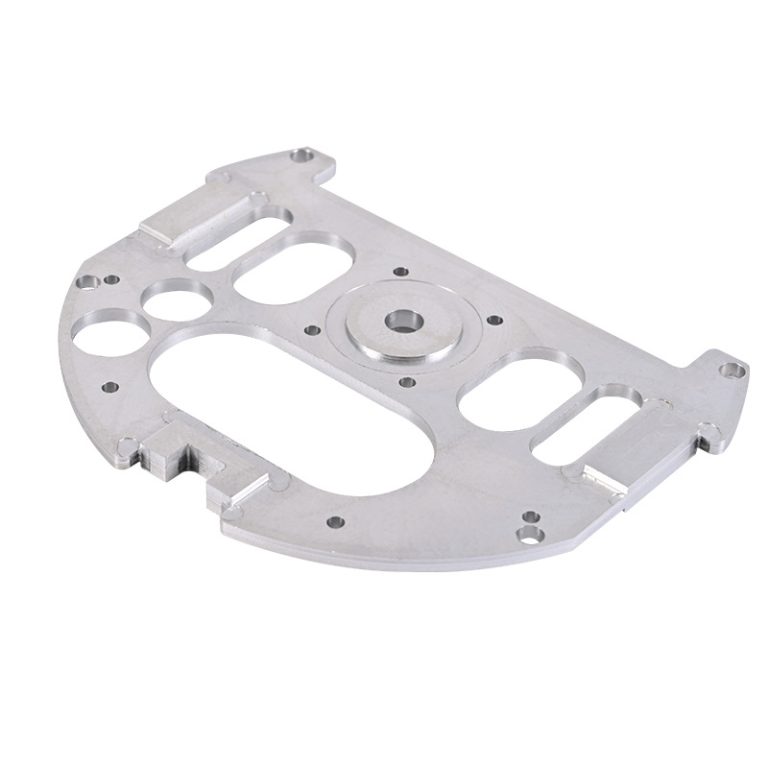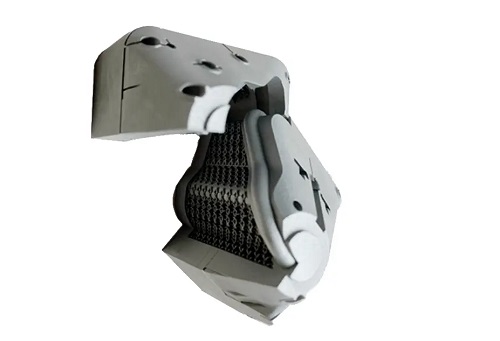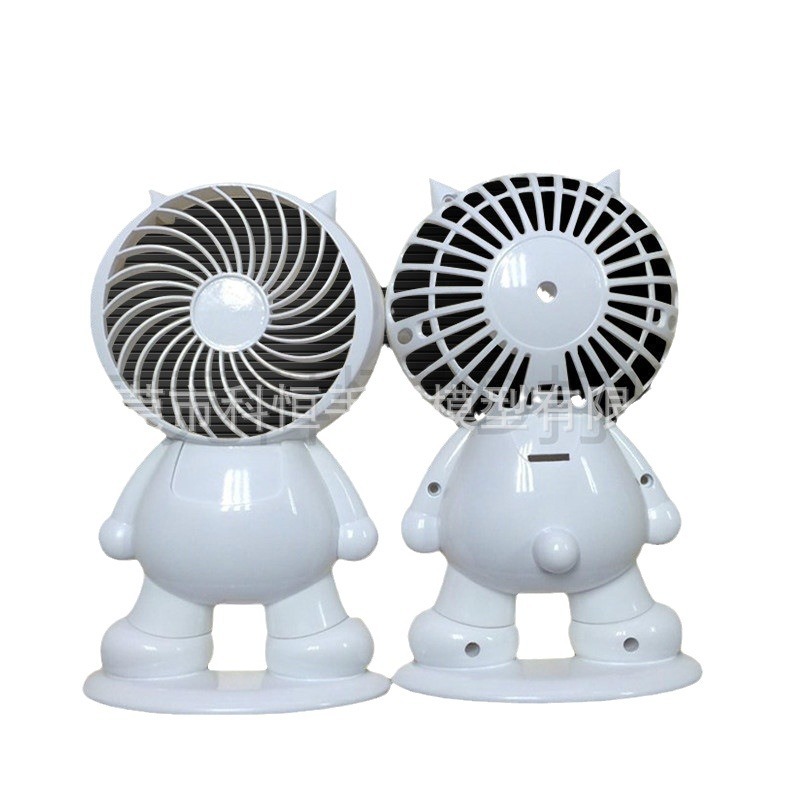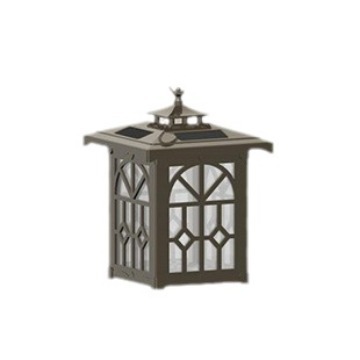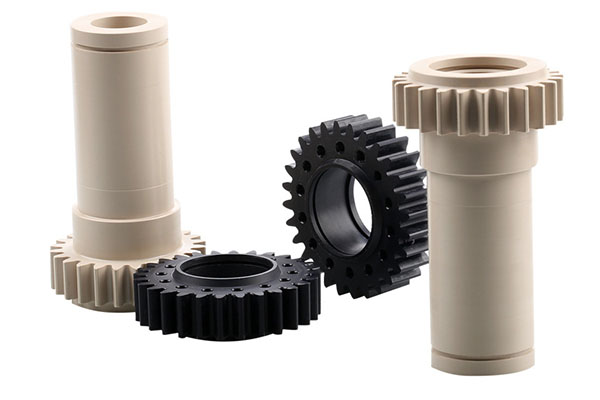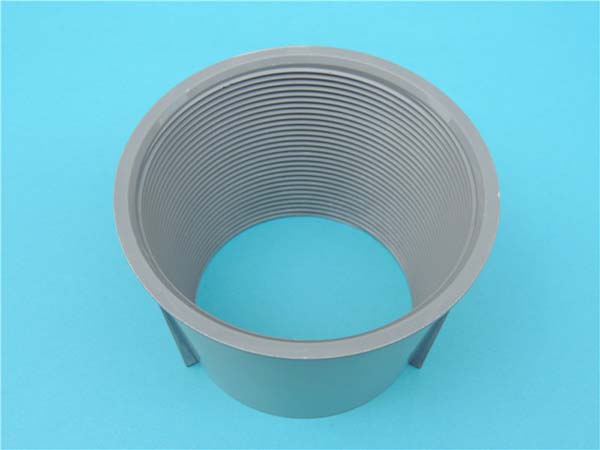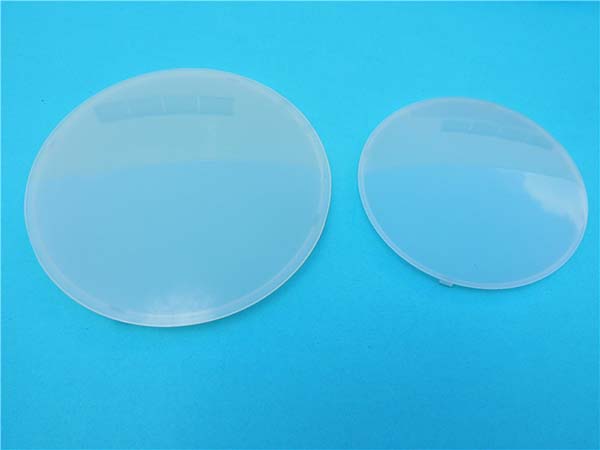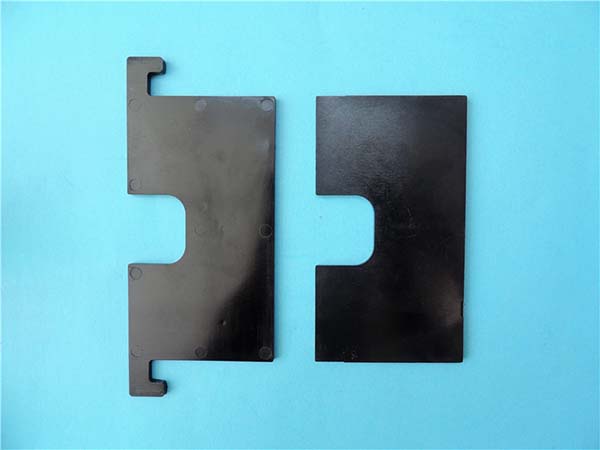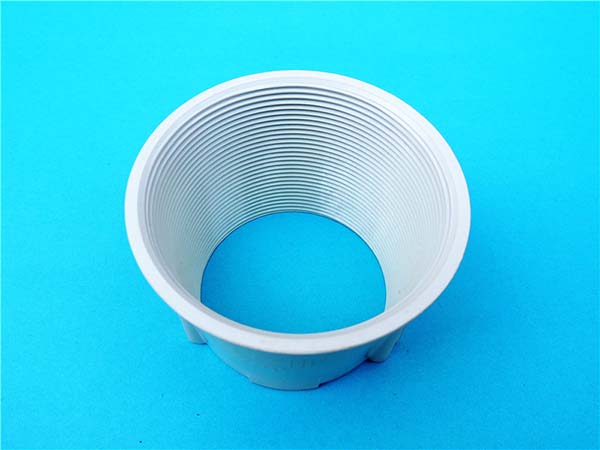1. Introduction
1.1 The Rising Trend of 3D Printing
The applications of 3D printing span a vast array of fields. In the automotive industry, companies like Volkswagen are using 3D printing to produce custom - designed parts, reducing the need for large - scale production lines for low - volume components. In healthcare, 3D - printed prosthetics are providing personalized solutions for patients, often at a lower cost and with a faster turnaround time compared to traditional manufacturing methods. For instance, a 3D - printed prosthetic limb can be designed to fit the exact contours of a patient's residual limb, enhancing comfort and functionality. The aerospace industry has also embraced 3D printing for its ability to create complex, lightweight parts, which are crucial for fuel efficiency and performance. GE Aviation, for Yigu Technology example, uses 3D printing to manufacture fuel nozzles for its jet engines, which are not only more efficient but also have a reduced weight.
The growth of 3D printing can be attributed to several factors. Firstly, the continuous advancement of technology has led to improvements in print quality, speed, and the range of available materials. Secondly, the decreasing cost of 3D printers and materials has made the technology more accessible to small - and medium - sized enterprises (SMEs) and even individuals. Thirdly, the demand for customized products in various markets has provided a strong impetus for the adoption of 3D printing, as it allows for the production of unique items with relative ease.
2. Understanding 3D Printing Services
2.1 What are 3D Printing Services
Yigu Technology 3D printing services are a professional offering that enables the creation of three - dimensional objects from digital model files. This is achieved through an additive manufacturing process, where materials are added layer by layer until the final object is formed. The digital models are typically created using computer - aided design (CAD) software, 3D scanners, or other digital modeling tools.
For example, a product designer may create a CAD model of a new smartphone case. Instead of using traditional manufacturing methods like injection molding, which require high - cost tooling and are more suitable for mass production, the designer can send the CAD file to a 3D printing service provider. The service then uses a 3D printer to build the smartphone case layer by layer. This process allows for quick iterations and customization, as changes to the digital model can be easily made and translated into a physical prototype in a relatively short time.
One of the key aspects of 3D printing services is their ability to handle complex geometries. Traditional manufacturing techniques often face limitations when it comes to creating intricate designs. In contrast, 3D printing can produce objects with internal cavities, overhangs, and complex lattice structures without the need for additional assembly or complex tooling. For instance, a 3D - printed prosthetic socket can be designed with a unique internal lattice structure that provides both strength and flexibility, while also reducing weight. This is not easily achievable with traditional manufacturing methods.
2.2 Types of 3D Printing Technologies
There are several 3D printing technologies available, each with its own set of advantages, limitations, and applications. Here are some of the most common ones:
A comparison of these three common 3D printing technologies is presented in the following Yigu Technology table:
| 3D Printing Technology | Material State During Printing | Resolution | Surface Finish | Support Structure Requirement | Cost (Equipment & Materials) | Ideal Applications |
| FDM | Melted filament | Moderate | Rough (visible layer lines) | Often required for overhangs | Low - cost | Prototyping, small - scale production of simple parts, hobbyist projects |
| SLA | Liquid resin | High | Smooth | Required for overhangs and complex geometries | High - cost | Jewelry design, dental models, high - precision prototypes, small - scale production of detailed parts |
| SLS | Powder | Moderate - high | Moderate (depends on material) | Usually not required | High - cost | Aerospace components, automotive parts, functional prototypes, parts with complex internal structures |
2.3 Available Materials for 3D Printing
The range of materials available for 3D printing is constantly expanding, allowing for greater versatility in design and application. Here are some of the main categories:
- Plastics:
- Common types: ABS, PLA, polycarbonate (PC), nylon, and thermoplastic polyurethane (TPU) are among the most commonly used plastic materials in 3D printing.
- Characteristics and applicable scenarios: ABS is a strong and durable plastic, suitable for applications that require mechanical strength, such as automotive parts and electronic enclosures. PLA is a biodegradable plastic made from renewable resources, making it popular for environmentally - conscious projects and applications where a smooth surface finish is desired, like consumer products and art objects. PC offers high heat resistance and impact strength, making it ideal for applications in the aerospace and automotive industries. Nylon has excellent strength and flexibility, and it is often used for functional parts, such as gears and bearings. TPU is a flexible and elastic material, commonly used for applications like shoe soles, flexible phone cases, and wearable devices.
- Metals:
- Common types: Aluminum, titanium, stainless steel, and cobalt - chrome alloys are some of the metals used in 3D printing.
- Characteristics and applicable scenarios: Aluminum is lightweight and has good corrosion resistance, making it suitable for aerospace and automotive applications where weight reduction is crucial. Titanium is extremely strong and lightweight, with excellent biocompatibility, which makes it ideal for medical implants, such as hip and knee replacements, as well as aerospace components. Stainless steel is known for its strength and corrosion resistance, and it is used in a wide range of applications, including industrial machinery, architecture, and jewelry. Cobalt - chrome alloys are highly wear - resistant and have excellent mechanical properties, making them suitable for dental prosthetics and high - performance engine components.
- Ceramics:
- Common types Alumina, zirconia, and porcelain are common ceramic materials used in 3D printing.
- Characteristics and applicable scenarios: Ceramics are known for their high hardness, heat resistance, and chemical stability. Alumina ceramics are often used in applications that require high - temperature resistance and wear resistance, such as cutting tools and furnace linings. Zirconia ceramics have good toughness and biocompatibility, making them suitable for dental crowns and bridges. Porcelain is used for artistic and decorative applications, such as 3D - printed sculptures and fine - art objects, due to its smooth surface and ability to be glazed and colored.
- Composites:
- Common types : Carbon fiber - reinforced plastics, glass fiber - reinforced plastics, and metal - matrix composites are examples of composite materials used in 3D printing.
- Characteristics and applicable scenarios: Carbon fiber - reinforced plastics offer high strength - to - weight ratios, making them ideal for applications where both strength and lightweight are important, such as in the aerospace and automotive industries. Glass fiber - reinforced plastics are also strong and have good dimensional stability, and they are used in a variety of applications, including consumer products and industrial parts. Metal - matrix composites combine the properties of metals with the unique characteristics of other materials, such as high - strength fibers, to achieve enhanced performance in applications like high - speed machining and aerospace structures.
4. The Role of 3D Printing in Rapid Prototyping
4.1 Definition and Importance of Rapid Prototyping
Yigu Technology Rapid prototyping is a crucial process in product development. It refers to the fast creation of a physical model or prototype of a product from a digital design. This prototype serves as a preliminary version of the final product, allowing designers, engineers, and stakeholders to test and evaluate various aspects such as form, fit, and function before full - scale production.
The importance of rapid prototyping in product development cannot be overstated. Firstly, it significantly accelerates the product development cycle. In traditional product development, the process from concept to a tangible model could be time - consuming, involving multiple rounds of design, tooling, and production setup. With rapid prototyping, a physical model can be produced in a relatively short time, enabling teams to quickly move from the idea stage to the testing stage. For Yigu Technology example, in the development of a new consumer electronics device, such as a smartwatch, rapid prototyping allows the design team to quickly build a prototype to test the ergonomics, button placement, and overall user interface. This helps in identifying design flaws early on, rather than waiting until the later stages of production when changes would be more costly and time - consuming.
Secondly, rapid prototyping provides an opportunity for real - time feedback and iteration. Once a prototype is created, it can be tested by different parties, including end - users, engineers, and marketing teams. Their feedback can then be used to make immediate improvements to the design. This iterative process ensures that the final product meets the needs and expectations of the market. For instance, a software - based product might have a 3D - printed mock - up of its physical interface. Users can interact with this mock - up, and their feedback on usability can be incorporated into the design, leading to a more user - friendly final product.
Finally, rapid prototyping helps in cost - effectiveness. By identifying and rectifying design issues in the prototype stage, companies can avoid costly mistakes during mass production. It also allows for the exploration of multiple design concepts with relatively low investment, as the cost of creating a prototype is often much lower than setting up a full - scale production line.
4.2 How 3D Printing Accelerates Prototyping
3D printing plays a pivotal role in accelerating the rapid prototyping process. One of the main ways it does this is through its additive manufacturing process. Unlike traditional manufacturing methods, such as subtractive manufacturing (e.g., machining) or formative manufacturing (e.g., injection molding), 3D printing builds objects layer by layer directly from a digital model.
This layer - by - layer construction allows for a much faster production of prototypes. For Yigu Technology example, in traditional machining, a complex part might require hours or even days of cutting, milling, and drilling operations to remove excess material and shape the final product. In contrast, a 3D printer can start building the part immediately after the digital model is prepared. A simple plastic prototype that might take a few days to machine could be printed in a matter of hours using a 3D printer.
3D printing also eliminates the need for complex and time - consuming tooling. In injection molding, for example, creating a mold for a part can be a lengthy and expensive process. The mold has to be designed, fabricated, and tested, which can take weeks or even months. With 3D printing, there is no need for a mold. The digital model is simply sent to the 3D printer, and the part is printed directly. This not only saves time but also reduces the overall cost of prototyping, especially for small - scale or one - off prototypes.
Another aspect of 3D printing that accelerates prototyping is its ability to handle complex geometries. Traditional manufacturing methods often face limitations when it comes to creating intricate designs. In contrast, 3D printing can produce objects with internal cavities, overhangs, and complex lattice structures without the need for additional assembly or complex tooling. This means that designers can create more innovative and functional prototypes, and these prototypes can be produced quickly. For example, a prototype of a heat exchanger with complex internal channels for fluid flow can be easily printed using 3D printing, while it would be extremely difficult and time - consuming to manufacture such a part using traditional methods.
4.3 Cost - effectiveness of 3D Printing in Prototyping
3D printing offers significant cost - effectiveness in prototyping, especially when compared to traditional manufacturing methods, especially for small - batch production.
Let's consider the cost components involved in prototyping. In traditional manufacturing, the cost of tooling is a major expense. For example, in injection molding, the cost of creating a mold for a plastic part can range from several thousand to hundreds of thousands of dollars, depending on the complexity of the part. This high tooling cost makes traditional manufacturing methods uneconomical for small - batch production or prototyping, where the number of parts required is relatively low.
In contrast, 3D printing has no or minimal tooling costs. The only costs associated with 3D printing are the cost of the 3D printer itself (which can be amortized over multiple projects), the cost of materials, and the cost of energy. The cost of 3D printing materials varies depending on the type of material, but in general, for small - scale prototyping, the material cost is relatively low. For Yigu Technology example, a spool of PLA filament, which can be used to print many small - to - medium - sized prototypes, might cost around \(20 - \)30.
In addition, 3D printing allows for easy design changes. In traditional manufacturing, making a design change often requires re - tooling, which is costly and time - consuming. In 3D printing, a design change can be made simply by modifying the digital model, and the new prototype can be printed immediately, without incurring additional tooling costs. This flexibility further enhances the cost - effectiveness of 3D printing in prototyping, as it enables multiple design iterations at a relatively low cost.
6. Real - World Applications and Case Studies
In the Automotive Industry
The automotive industry has been at the forefront of adopting 3D printing services for custom designs and rapid prototyping, and there are numerous successful cases that highlight its benefits.
One such example is Volkswagen. The company has been using 3D printing to produce custom - designed parts for its vehicles. In the production of low - volume components, traditional manufacturing methods often prove to be uneconomical due to high tooling costs and long production lead times. With 3D printing, Volkswagen can quickly produce these parts on - demand. For instance, certain interior components, like unique dashboard inserts or custom - shaped knobs, can be printed in a matter of hours. This not only reduces the inventory cost associated with storing large quantities of these low - volume parts but also allows for greater design flexibility. If a design change is needed, it can be easily implemented in the digital model and a new part can be printed immediately, without the need to re - tool as in traditional manufacturing.
Another case is Tesla. The company has revolutionized the automotive manufacturing process with 3D printing. In the production of the Model Y, Tesla used 3D printing to integrate 70 different parts into just one single component for the rear chassis. This not only simplified the production process but also reduced the weight of the vehicle, which in turn improved its energy efficiency. By using 3D printing, Tesla was able to accelerate the development of this new model. The ability to quickly produce and test prototypes meant that design flaws could be identified and rectified early in the development cycle, saving both time and cost.
BMW also extensively uses 3D printing in its vehicle development. In the i8 Roadster, BMW employed 3D printing to produce the window guide rail parts. The use of 3D printing significantly sped up the research and development process. Traditional manufacturing methods would have required the creation of molds and complex machining operations, which could have taken months. With 3D printing, BMW was able to have the parts printed and installed in a much shorter time frame. This allowed the company to bring the i8 Roadster to market more quickly, gaining a competitive edge in the high - performance hybrid sports car segment.
3D printing in the automotive industry is not only limited to prototyping but is also increasingly being used for the production of end - use parts. The following table summarizes some of the key advantages of 3D printing in automotive applications based on these case studies:
| Advantages | Examples from Case Studies |
| Cost - effectiveness for low - volume production | Volkswagen's production of custom interior components; reduces tooling and inventory costs |
| Design integration and weight reduction | Tesla's integration of multiple parts into one for the Model Y's rear chassis, improving energy efficiency |
| Accelerated R&D and time - to - market | BMW's use of 3D printing for i8 Roadster window guide rail parts, speeding up the development process |
7. Conclusion
In Yigu Technology conclusion, 3D printing services near you have emerged as a game - changer for custom designs and rapid prototyping. The technology has transcended its early - stage novelty to become an integral part of modern manufacturing and product development processes across a wide range of industries.
For custom designs, 3D printing offers an unprecedented level of design freedom. Designers are no longer constrained by the limitations of traditional manufacturing methods. They can explore complex geometries, create intricate internal structures, and bring to life truly unique and personalized products. Whether it's a customized piece of jewelry, a one - of - a - kind home decor item, or a specialized automotive component, 3D printing enables the realization of designs that were once considered too challenging or costly to produce. The ability to quickly iterate on designs also means that products can be refined and optimized based on real - time feedback, leading to better - quality end - products.
In the realm of rapid prototyping, 3D printing has revolutionized the product development cycle. By significantly reducing the time and cost required to create prototypes, it allows companies to bring products to market faster. The elimination of the need for complex and expensive tooling in 3D printing makes it an ideal choice for small - batch production and prototyping. This not only saves resources but also reduces the risk associated with product development, as design flaws can be identified and corrected at an early stage.
The real - world applications across industries such as automotive, healthcare, and consumer goods further illustrate the transformative power of 3D printing services. In the automotive industry, it has enabled the production of custom parts, design integration, and accelerated research and development. In healthcare, it has improved the lives of patients through customized prosthetics, implants, and better surgical planning. In the consumer goods sector, it has provided consumers with more personalized products and given small - scale manufacturers the opportunity to be creative and innovative.
FAQ
Q1: What are the most common materials used in 3D printing for custom designs?
A1: The most common materials include plastics like ABS, PLA, nylon, and TPU, metals such as aluminum, titanium, and stainless steel, ceramics like alumina and zirconia, and composites such as carbon fiber - reinforced plastics. Each material has its own unique properties, making them suitable for different types of custom designs. For example, PLA is great for consumer - facing and environmentally - friendly products, while titanium is ideal for high - strength applications in aerospace and medical implants.
Q2: How much does it cost to use 3D printing services for rapid prototyping?
A2: The cost varies depending on factors such as the type of 3D printing technology used, the material, and the complexity and size of the prototype. Generally, for small - scale prototyping with common materials like PLA using FDM technology, the cost can be relatively low, mainly covering the cost of materials and a small amount of equipment usage fees. However, if using more expensive materials like metals or high - end 3D printing technologies such as SLS, the cost will be higher. For example, a small plastic prototype printed with FDM might cost a few dollars in materials, while a metal prototype printed with SLS could cost hundreds of dollars.
Q3: Can 3D printing services handle large - scale production?
A3: While 3D printing is more commonly associated with small - batch production and prototyping, it is gradually being used for larger - scale production in some industries. However, compared to traditional mass - production methods like injection molding, 3D printing may have limitations in terms of speed and cost for very large - scale production. But for products with complex geometries or low - volume requirements, 3D printing can be a cost - effective and viable option for large - scale production. Some companies are also developing ways to improve the speed and efficiency of 3D printing to make it more suitable for larger - scale manufacturing.
